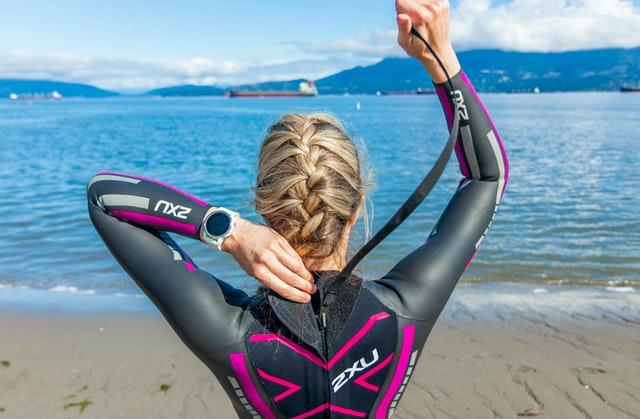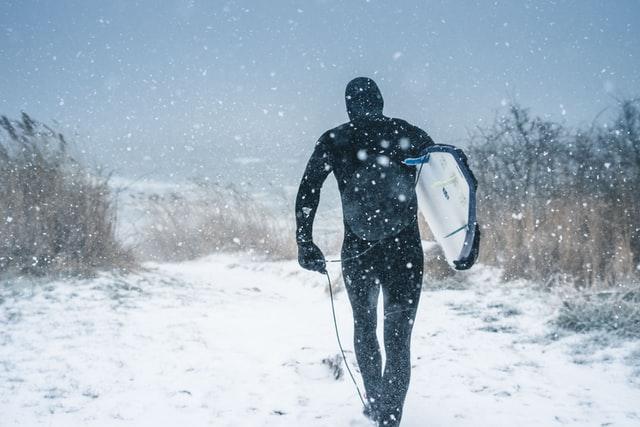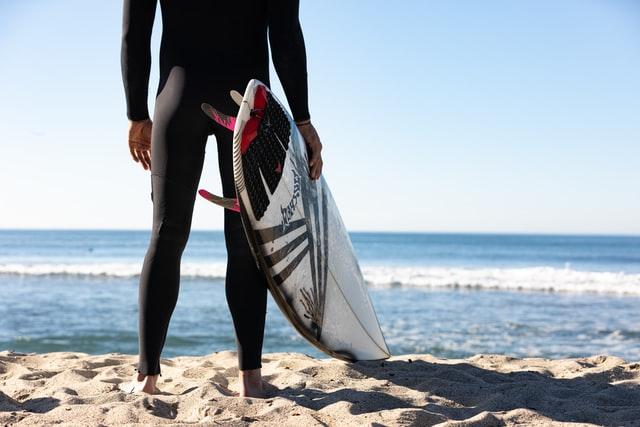Wetsuits vs Drysuits: What are the Differences?
Shopping for a suit for scuba diving is a big deal. You likely need one that will keep you warm depending on the sea temperature where you dive and how deep you plan to dive. But did you know there are two types of suits?
Wetsuits and drysuits are two different types of suits both meant to keep a diver dry, but they do this in two completely different ways. One keeps the diver warm by keeping them wet and the other keeps the diver warm by keeping them dry.
Let’s look at the difference between wetsuits and drysuits and which one you may want to consider for your next dive.

What is a Wetsuit?
A wetsuit is a suit worn while performing water-based activities. Typically they are tight around the body and are made out of neoprene.
Neoprene wetsuits come in different thicknesses, and the one you need will depend on how cold the water will be where you plan to dive. Most divers wear these in combination with a mask and flippers, but some wetsuits are designed to allow your feet, head, and hands to be uncovered.
When wearing a wetsuit, you will get wet, this is because the suit works by trapping a layer of water in the suit around the wearer. Your body will heat this layer of water trapped inside the suit and provide you warmth.
Wetsuit Basics:
- Different thicknesses allow different degrees of motion
- Thicker suits allow more warmth
- Water will still get in the suit
- Wetsuits can cover the full body or just part of it
Activities that can Require a Wetsuit:
- Surfing
- Cold-water swimming
- Diving
- Kayaking
- Paddle-boarding
- Sailing
- Rafting
- Kitesurfing
- Waterskiing
- Deep sea diving
- Sea rescue operations
- Snorkeling
- Canoeing
- Windsurfing
What is a Drysuit?
A drysuit is a suit worn while performing water-based activities for the purpose of keeping you warm. Drysuits can also be made of neoprene, but they are frequently combined with another thick material, making them more restrictive than wetsuits. Drysuits cover your entire body, including your head, hands, and feet.
Drysuits are made for diving in the coldest waters, as they keep all water out in order to keep the diver warm. They can be bulky, however, as the wearer of a drysuit must wear additional layers in order to keep warm. These divers also must pair their suits with a scuba tank as they usually go deep underwater.
Drysuit Basics:
- Motion is limited
- The full body will be covered
- No water is allowed in the suit
- Bulky but warm if worn properly
Activities that can Require a Drysuit:
- Deep sea diving
- Kayaking
- Sea rescue operations
- Snorkeling in very cold waters
- Kitesurfing
- Windsurfing
- Water-skiing

Wetsuit vs Drysuit: Which Should You Choose?
As you can see, the major difference between a drysuit vs wetsuit is whether or not water is allowed inside the suit near the wearer. Choosing the one that you should wear widely depends on your personal preferences as well as the activities you plan to perform.
Before choosing which to wear, consider the following aspects of your activity:
- What is your activity?
- Where is your activity at?
- How long do you plan to be in the water?
- Are you sensitive to the cold?
Answering these questions can help you decide which type of suit to wear. After you answer them, take a look at the basics above.
If you are diving somewhere really cold, then a drysuit is the way to go as it will keep you warm in the most frigid of temperatures. Plus, when diving, you typically don’t need as much of a range of motion as you do for other activities.
If you are surfing however or planning some other water sport, a wetsuit is best, as these can be adjusted based on thickness, and as you move, your body heat will increase and keep you warm. Keep in mind, however, that the thickest of wetsuits may be just as physically restrictive as a drysuit.
For those who have an activity that is somewhere in the middle of the above examples, know that as a general rule, a drysuit is recommended when the sea temperatures are below 50°F and for anything above 50°F, a wetsuit will likely work just fine. If you are really sensitive to the cold, you may want to consider a drysuit at 55°F temperatures and below.
Why Do You Need a Suit to Dive?
Any sort of wetsuit or drysuit will be somewhat restrictive as you move about the cold waters. But the reality is unless you are surfing where the water is warm year round like in Hawaii, a wetsuit can be instrumental in saving your body from cold water shock.
Wetsuits and drysuits alike can also help to protect you from sunburn, rashes, as well as hazards of the ocean like jellyfish stings. So even if you are planning a water activity in a warm location, you’ll likely want to pick up a thin wetsuit to help protect you from the dangers of open water swimming or surfing.
But remember, different thicknesses of suits can provide different ranges of motion, so take the time to find the suit that keeps you warm while allowing you enough range of motion to keep you happy as you explore an underwater world.

Wet Suit vs Dry Suit FAQ
Can You Swim in a Drysuit?
While it is possible to swim in a drysuit, you will find that your movements are quite restricted. Therefore if you are looking to swim competitively in cold water it is probably better to go with a thicker wetsuit than a drysuit.
Do You Float in a Drysuit?
One cool thing about a drysuit is that it keeps air trapped in the suit, thus allowing the wearer to float in the water. Although this will make it easier to stay at the surface, this may make it difficult if your purpose is to dive down to the ocean floor.
Can You Snorkel in a Drysuit?
You can snorkel in a drysuit, and you may find it helpful as a drysuit will help you to float at the surface. If you are in a warm location, however, you will miss the cool refreshing feel of the water on your skin as you explore the coral reefs.
Can You Surf in a Drysuit?
While you CAN surf in a drysuit, it is not recommended, as your range of motion will be limited as you go from lying to standing on the board. Instead, you should buy a wetsuit that allows you to have a full range of motion while keeping you warm.
Link/Reference This Article
If you found the information in this article useful in your research, please link to use as the source using the tool below.
-
<a href="http://seatemperatures.net/blog/wetsuits-vs-drysuits-what-are-the-differences/">Wetsuits vs Drysuits: What are the Differences?</a>
-
"Wetsuits vs Drysuits: What are the Differences?". SeaTemperatures.net. Accessed on April 20, 2024. http://seatemperatures.net/blog/wetsuits-vs-drysuits-what-are-the-differences/.
-
"Wetsuits vs Drysuits: What are the Differences?". SeaTemperatures.net, http://seatemperatures.net/blog/wetsuits-vs-drysuits-what-are-the-differences/. Accessed 20 April, 2024
-
Wetsuits vs Drysuits: What are the Differences?. SeaTemperatures.net. Retrieved from http://seatemperatures.net/blog/wetsuits-vs-drysuits-what-are-the-differences/.